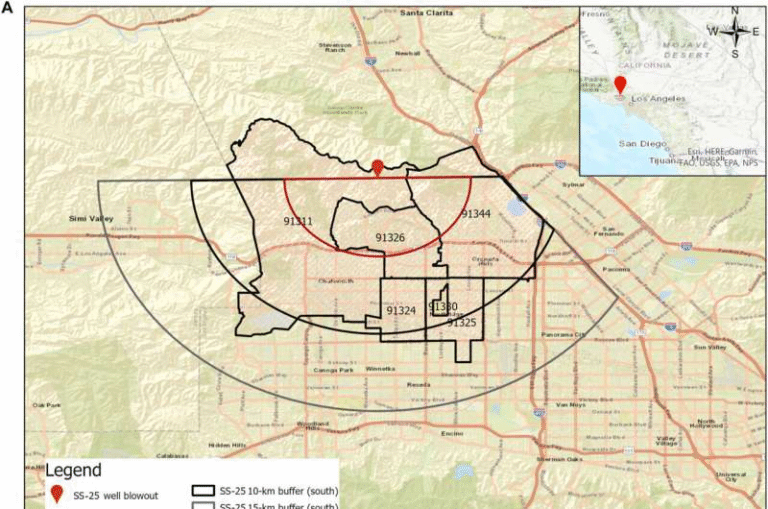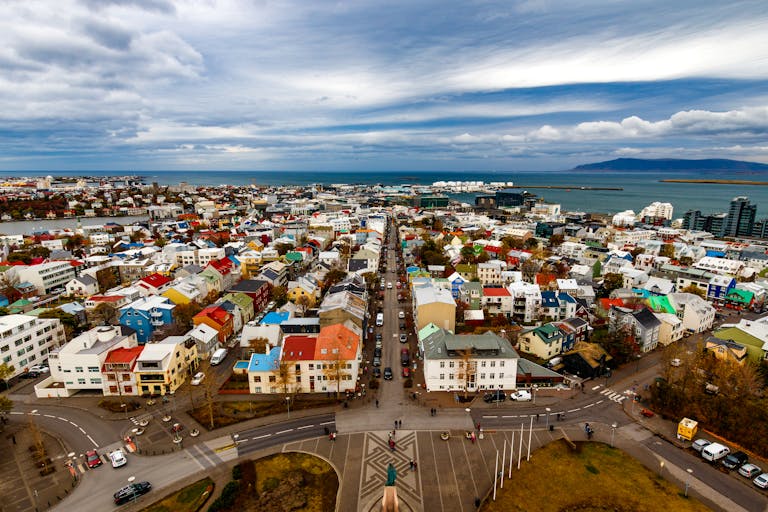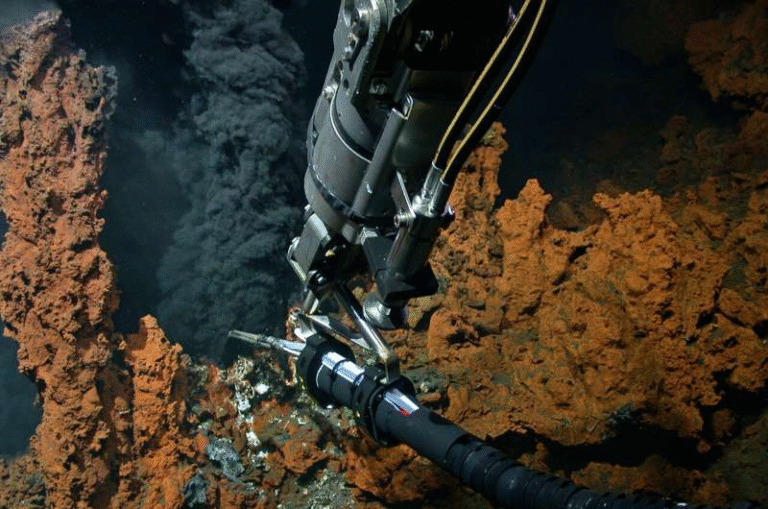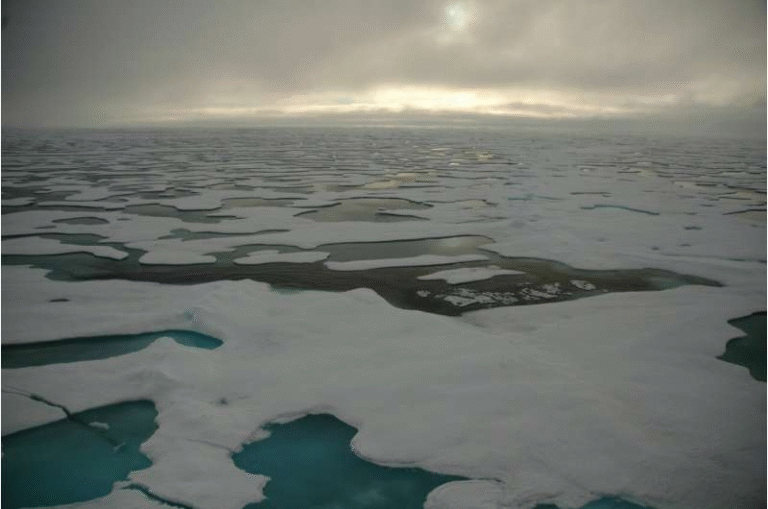Increasing Heat Is Supercharging Arctic Climate and Weather Extremes

The Arctic, long known as Earth’s early warning system for climate change, is now undergoing something far more dramatic than just gradual warming. A new international study led by researchers at North Carolina State University and published in Nature Reviews Earth & Environment reveals that the region’s climate has entered a new state — one characterized by a rapid surge in the frequency and intensity of extreme events across the atmosphere, ocean, and cryosphere.
This isn’t just another “warming Arctic” story. The study, led by Xiangdong Zhang, analyzed decades of historical climate data, observational records, and advanced CMIP6 (Coupled Model Intercomparison Project Phase 6) projections. What they found is both fascinating and alarming: since the year 2000, the Arctic has experienced a step change — a sharp, non-linear shift in its climate baseline that is now fueling a series of interconnected, extreme phenomena.
The Arctic Is Warming Three Times Faster Than the Global Average
For years, scientists have known that the Arctic is heating up faster than the rest of the planet — a process known as Arctic amplification. The annual mean warming rate in the region is now more than three times the global average, a figure that underscores just how sensitive this part of the world is to climate changes.
But this study went a step further. Instead of simply tracking rising temperatures, the researchers looked at how this accelerated warming interacts with the dynamics of the atmosphere, ocean, and sea ice, and how that interplay has reshaped the behavior of extreme weather events.
They discovered that this isn’t a smooth, predictable increase in temperature. Instead, the Arctic climate has jumped into a new regime — one defined by extremes that reinforce each other through feedback loops.
The “Pushing and Triggering” Mechanism
The authors describe what they call a “pushing and triggering” mechanism driving this transformation.
- Pushing: Continuous global warming, largely driven by greenhouse gas emissions, pushes the Arctic system toward instability by increasing baseline temperatures and altering large-scale circulation patterns.
- Triggering: Once pushed beyond a certain point, internal processes — such as intense storms, ocean heat surges, and atmospheric blocks — trigger sudden and powerful changes in weather and ice conditions.
These two forces working together create what researchers call nonlinear changes — abrupt shifts rather than smooth transitions. In essence, the Arctic climate has moved past a tipping point, meaning it now responds to warming in a fundamentally different way than before.
The Numbers: A Surge in Extreme Events
The findings are strikingly specific. Since around the year 2000, the probability and intensity of extreme events across multiple Arctic systems have skyrocketed:
- Atmospheric heat waves have become 20% more frequent.
- Atlantic Ocean warm events have risen by 76%.
- Sea ice loss events have increased by 83%.
- Greenland Ice Sheet melt extent has gone up by 68%.
Before the 21st century, these types of events were rare. Now, they are becoming the new normal — and projections show this trend will continue and intensify throughout the century.
What’s Driving the Change?
The study identifies several interconnected drivers that are transforming the Arctic climate system:
1. Enhanced Poleward Heat and Moisture Transport
Shifts in large-scale atmospheric and oceanic circulation patterns are funneling more warm, moist air from lower latitudes into the Arctic. This process fuels heat waves, accelerates ice melt, and destabilizes existing weather systems.
2. Ocean Heat Influx
The Atlantic Ocean’s upper layers are carrying increasing amounts of heat northward. As this heat reaches the Arctic Ocean, it erodes sea ice from below, warming surrounding waters and reducing the ocean’s ability to store cold.
3. Atmospheric Blocking and Cyclones
Persistent high-pressure systems, also known as blocking patterns, trap warm air over the Arctic for longer periods. Meanwhile, intense cyclones disrupt sea ice and drive up regional temperatures. These atmospheric events can last for days or weeks, amplifying the effects of warming.
4. Sea Ice and Ice Sheet Feedbacks
As sea ice melts, it exposes darker ocean surfaces that absorb more solar radiation. This leads to additional heating, further melting ice, and triggering more extremes. It’s a self-reinforcing feedback loop that accelerates regional warming and disrupts global circulation patterns.
A Step Change: The Arctic’s New Normal
According to the researchers, the Arctic climate has undergone a step change since around 2000. That means its entire baseline state — including temperature averages, sea ice extent, and atmospheric circulation — has shifted to a new level.
This change doesn’t just affect Arctic ecosystems. It reverberates globally. Because the Arctic plays a key role in regulating the planet’s climate system, these changes can disrupt jet stream behavior, alter mid-latitude weather, and contribute to extreme events in regions far from the poles.
Ice-Free Summers on the Horizon
The study warns that if current trends continue, the Arctic could experience ice-free summers by mid-century. This is a milestone that climate scientists have long predicted, but what’s different here is the evidence that we’re already on an accelerated path toward it.
An ice-free Arctic would dramatically alter ecosystems, open new shipping routes, and increase regional warming even further by removing one of Earth’s most reflective surfaces. It could also contribute to rising sea levels through the melt of the Greenland Ice Sheet, which holds enough ice to raise global sea levels by more than seven meters if it were to melt completely.
What Makes This Study Different
Many studies have looked at parts of the Arctic climate system in isolation — for instance, focusing on sea ice loss or ocean warming. What makes this research stand out is its system-wide perspective.
The team examined the interconnections between atmospheric, oceanic, and cryospheric extremes, showing that these systems don’t operate independently. Instead, one extreme often sets off another, creating a cascade effect across the region.
The researchers emphasize that understanding these compound extremes is critical for predicting and managing future impacts. Traditional models that treat climate drivers separately may underestimate how fast and how dramatically the Arctic — and by extension, the global climate — is changing.
Beyond the Arctic: Why It Matters for Everyone
The Arctic is often referred to as Earth’s climate barometer because changes there tend to precede or influence global climate trends. When the Arctic warms and sea ice declines, it affects the jet stream, which in turn shapes weather patterns in North America, Europe, and Asia.
For example, weaker temperature contrasts between the Arctic and mid-latitudes can lead to a wavier jet stream, causing prolonged heat waves, cold spells, and extreme rainfall in regions far from the poles. In other words, what happens in the Arctic doesn’t stay in the Arctic.
Additionally, melting ice contributes to global sea-level rise, threatening coastal communities worldwide. Shifts in ocean circulation could disrupt ecosystems, fisheries, and weather systems across the planet.
Understanding Nonlinear Climate Shifts
One of the most important takeaways from this study is the recognition that climate change is not always gradual. Many systems — including the Arctic — can reach tipping points where small increases in temperature lead to sudden, dramatic transformations.
These nonlinear changes make climate prediction far more complex. Scientists can’t simply extrapolate current trends linearly into the future. Instead, understanding feedback loops, thresholds, and cross-system triggers becomes essential.
This concept of “pushing and triggering” helps explain why the Arctic has shifted so suddenly — and it also serves as a warning that similar step changes could occur in other parts of Earth’s climate system if warming continues unchecked.
Data and Methods: A Quick Look
The team’s analysis combined several lines of evidence:
- Historical temperature and precipitation records covering decades of Arctic climate data.
- Satellite observations tracking sea ice extent, ice sheet melt, and atmospheric patterns.
- Model projections from CMIP6, which simulate global climate behavior under various greenhouse gas scenarios through the end of this century.
This integrated approach allowed researchers to observe both past trends and future trajectories, offering one of the most comprehensive pictures yet of how the Arctic’s climate system is evolving.
The Bigger Picture: Arctic Feedbacks in a Changing World
The Arctic is more than a cold, remote region — it’s a driver of global stability. The changes happening there are already influencing the rest of the world. As sea ice continues to decline, the region’s reflective power diminishes, absorbing more heat and accelerating global warming.
Permafrost thaw, another consequence of Arctic warming, releases methane, a powerful greenhouse gas, into the atmosphere, amplifying the warming effect. These feedbacks make it increasingly difficult to reverse or slow down the changes once they begin.
What Needs to Happen Next
The researchers call for more work on understanding multiscale climate drivers in the Arctic. This means improving observation networks, refining models, and better integrating data across the atmosphere, ocean, and ice systems.
They also emphasize the importance of developing adaptation strategies for both Arctic and non-Arctic regions. As extreme events become more frequent, communities, industries, and governments will need better forecasting systems and resilience planning.
Most importantly, the findings reinforce the urgency of reducing greenhouse gas emissions. The longer warming continues, the more likely it is that irreversible step changes will occur — not just in the Arctic, but globally.
Final Thoughts
The message from this study is clear: the Arctic has crossed into a new climate state where extremes are the norm rather than the exception. This shift is reshaping weather patterns, accelerating ice loss, and amplifying feedbacks that influence the entire planet.
We are witnessing a transformation in real time — a reminder that climate change is not a distant threat, but an unfolding reality. Understanding how the Arctic system interacts and responds to warming gives us a clearer view of what’s at stake and why urgent action is needed to limit further change.
Research Reference:
Weather and Climate Extremes in a Changing Arctic – Nature Reviews Earth & Environment (2025)





